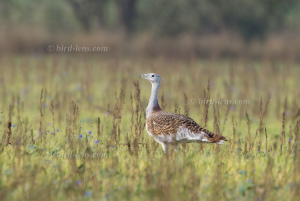 Berlin, the capital of Germany is a top tourist destination. Berlin might not sound like a birdwatcher’s paradise but, Berlin offers surprisingly good birding. So the city is a great place to combine a city trip with a birding excursion. If you have spare time between two tourist attractions, if you are fed-up with the museum visits in crowdy downtown Berlin, have enjoyed nightlife extensively and are a birdwatcher, you might be interested to know, where you can find good places to enjoy fresh air and relax with birding for typical European birds.
Berlin, the capital of Germany is a top tourist destination. Berlin might not sound like a birdwatcher’s paradise but, Berlin offers surprisingly good birding. So the city is a great place to combine a city trip with a birding excursion. If you have spare time between two tourist attractions, if you are fed-up with the museum visits in crowdy downtown Berlin, have enjoyed nightlife extensively and are a birdwatcher, you might be interested to know, where you can find good places to enjoy fresh air and relax with birding for typical European birds.
One of these sites is a protected nature area in the Havellaendisches Luch between the towns of Nauen and the town of Rathenow approx. 70 km west of Berlin centre. There survives a small remnant population of the Great Bustard (Otis tarda) of about 100 birds. They can be watched from tower hides, which are nicely located right in the middle of the agricultural land, where the Bustards breed and live. Great Bustards are one of the special birds of the state of Brandenburg. Brandenburg hosts the only breeding populations of the Great Bustard in Germany. The protected area provide habitat for the Bustards. The birds use the area in different, sometimes annually changing intensity as breeding or wintering grounds. Arrangements with farmers created appropriate structures to ensure the survival of this heaviest flying bird in the world. In addition to a low intensity of use in general the usage of the meadows and fields is skipped in the time between breeding season and fledging of the young. A loose vegetation structure ensures that the former steppe birds find enough sunny spots on the ground.
No species in the agricultural landscape of Europe develops as a chick as much weight as the Great Bustard. The birds are dependent on large insect food. In order to provide an optimal basis of feed for the chicks, a multi-field crop rotation with fallow, year-round forage supply and permanent grassland strips is maintained. The use of biocides and fertilizers is forbidden. For the implementation of the above mentioned measures, a contract was signed with a local commercial farm.
Common Cranes (Grus grus) stop as they migrate through in spring and in the autumn. The Havellaendisches Luch is not one of the largest staging post, but one of the best to observe the flights when they come in to roost at the ponds and reedbeds nearby. The migration of the Cranes is best observed from August until November.
An excursion to the area in the North-West of Berlin is always rewarding. During migration it is possible to see thousands of Eurasian Cranes. Other possible species to be observed during this trip from the tower hides are in late fall or winter Eurasian Marsh-Harrier (Circus aeruginosus), Northern Harrier (Circus cyaneus), Rough-legged Hawk (Buteo lagopus), Merlin (Falco columbarius). the Great Bustard is spotted frequently not only in the Luch. During the trips encounters with Beaver and Eurasian Otter are possible, too.
There are already many airlines which use the Airport of Berlin. An alternative is to take a flight to Frankfurt/ Main, the international hub for Germany, and drive with a rented car in roughly half a day to Berlin and enjoy the landscape while almost flying over the autobahn.
Access to the reserve is not difficult. There are other places in the nearer surroundings where access is a bit tricky. Please contact via the contact form if I can give further directions or even guide you!